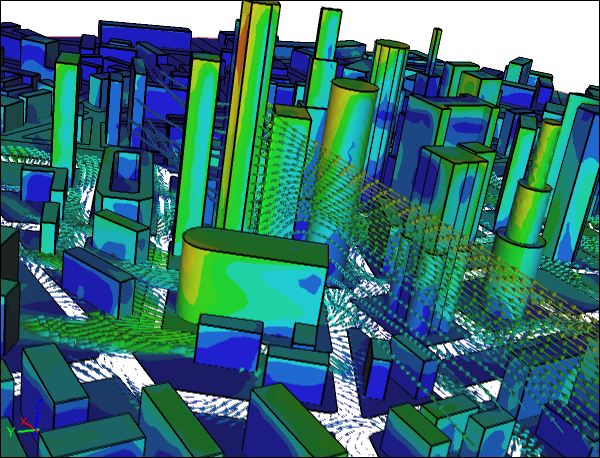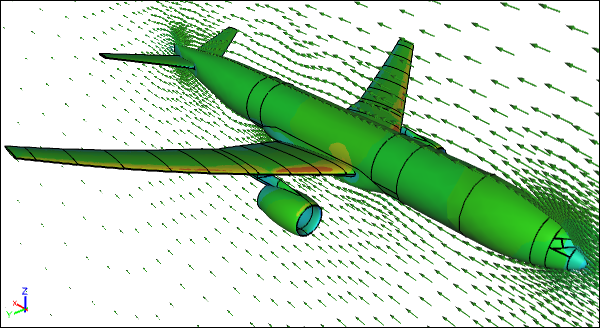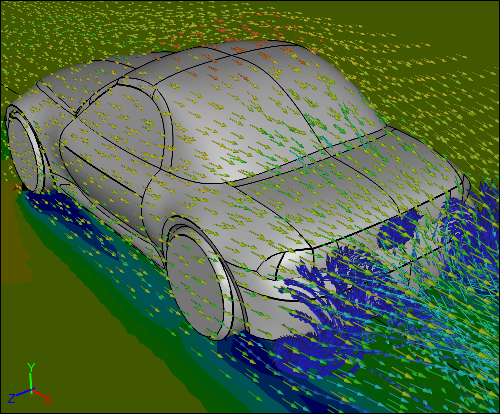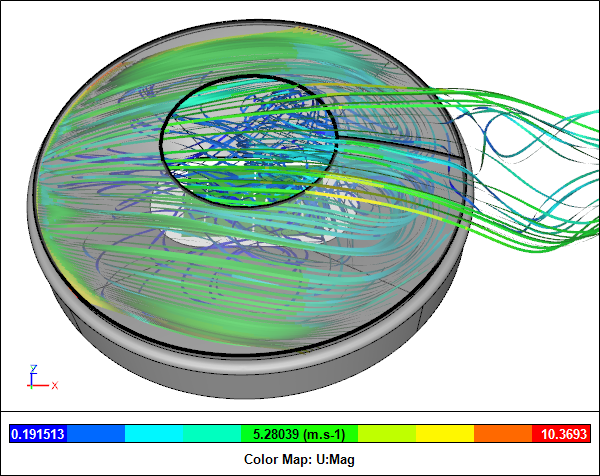
External Aerodynamics with CFD
Computational Fluid Dynamics (CFD) sees broad use in many applications across a diverse range of industries. No more so is this true than in the applications you'll see for CFD in external aerodynamics analysis.
 CFD Simulation of a CityAir Velocity Vectors
CFD Simulation of a CityAir Velocity Vectors
Aerospace
 CFD Simulation of an AirlinerAlpha = 6 degrees, velocity contours and arrows
CFD Simulation of an AirlinerAlpha = 6 degrees, velocity contours and arrows
External aerodynamics simulations to calculate lift and drag for aircraft configurations was one of the pioneering applications for CFD in the aerospace industry. The success of CFD in the aerospace industry was a key driver for its adoption in other fields.
Automotive
 CFD Simulation of a CarRear view of velocity contours and streamline arrows
CFD Simulation of a CarRear view of velocity contours and streamline arrows
The automotive sector, as is often the case, followed the CFD path blazed by the aerospace pioneers with an initial emphasis on motor racing (emphasizing downforce increases over drag), but has now expanded to cover mass-produced cars (emphasizing drag reduction over downforce). Though car styling is still more art than engineering, CFD usually has a large role to play in finessing the external shape prior to its progression to final production.
Building/Construction
 CFD Simulation of a StadiumStreamlines
CFD Simulation of a StadiumStreamlines
Like engineers in the aerospace and automotive industries, architects like to push the bounds of the possible in their designs. This means using non-traditional building shapes with curves and other novel features, e.g., tensile membrane structures. For these types of buildings, traditional assumptions about external airflow behavior are not always valid. CFD has proven to be a cost-effective means to determine building loads to aid in the early design of such new and novel structures.
Wind Turbines
 Vertical Axis Wind Turbine Lenz2 CFD SimulationVelocity Vectors
Vertical Axis Wind Turbine Lenz2 CFD SimulationVelocity Vectors
Wind turbines are increasingly seen as a way to decrease our reliance on fossil fuels and therefore reduce greenhouse gas emissions on our quest to address climate change. Given the similarities between wind turbines and propellers it is no shock that CFD, after being used extensively for propeller design, is now a key tool in the design of both horizontal and vertical axis wind turbines. CFD is not only used for the turbine blade design, but it is proving useful for evaluating turbine sites in conjunction with historical wind data.
Environmental
 Passive Species CFD SimulationPollutant plume released in air from a chimney
Passive Species CFD SimulationPollutant plume released in air from a chimney
The dispersion of pollutants in air is another area were CFD simulations can assess ahead of time whether downstream regions are likely to experience unacceptable emission concentrations. As both advanced and developing nations become more sensitive to air quality, then CFD plays a crucial role both in the design of equipment to disperse or capture pollutants and with the regulators that monitor such emissions.
Recent blog posts
- CFD Simulates Distant Past
- Background on the Caedium v6.0 Release
- Long-Necked Dinosaurs Succumb To CFD
- CFD Provides Insight Into Mystery Fossils
- Wind Turbine Design According to Insects
- Runners Discover Drafting
- Wind Tunnel and CFD Reveal Best Cycling Tuck
- Active Aerodynamics on the Lamborghini Huracán Performante
- Fluidic Logic
- Stonehenge Vortex Revealed as April Fools' Day Distortion Field
